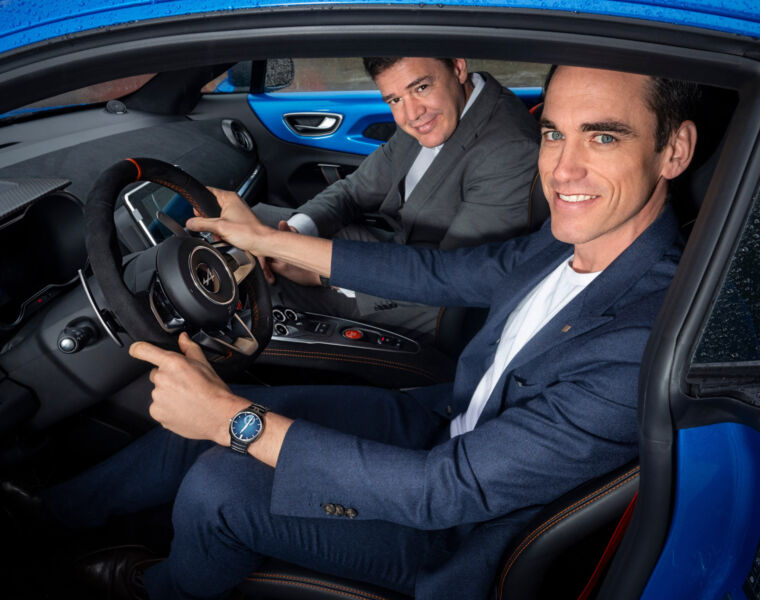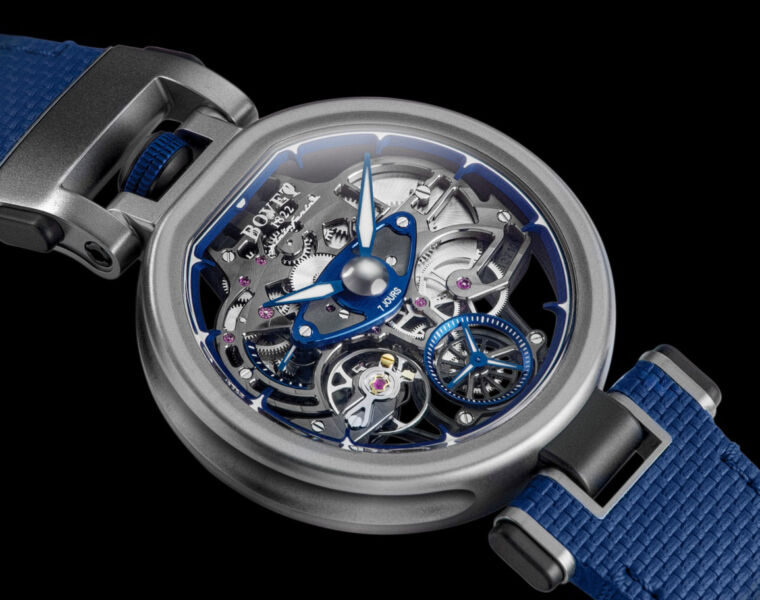Louis Moinet, a man ahead of his time is found to be the inventor of one of the greatest horological inventions, the chronograph.
Recently a hitherto unknown timepiece, discovered by chance, is rewriting the history of horological development. The timepiece has turned out to be earliest chronograph found, although its maker, Louis Moinet, called it a “compteur de tierces.” According to hallmarks on the dust cover, the chronograph the manufacture was started way back in 1815 and completed the following year.
 This timepiece is of an entirely original design and evidently the work of a master watchmaker well ahead of his time. The timepiece measured events to the sixtieth of a second (known in those days as a “third” or tierce in French), indicated by a central hand. The elapsed seconds and minutes are recorded on separate sub dials, and the hours on a 24-hour dial.
This timepiece is of an entirely original design and evidently the work of a master watchmaker well ahead of his time. The timepiece measured events to the sixtieth of a second (known in those days as a “third” or tierce in French), indicated by a central hand. The elapsed seconds and minutes are recorded on separate sub dials, and the hours on a 24-hour dial.
The stop, start and reset functions for the central hand are controlled by two buttons which qualifies it as a chronograph in the modern sense, although the term was coined much later. The return-to-zero function was revolutionary for the time. Until today, this invention had been thought to date from Adolphe Nicole’s patent of 1862.
High-frequency pioneer
Back in the 19th century, watchmakers sought to increase the precision with which they could measure time by increasing the frequency of their watches. By 1820 the generally accepted limit was time measurement to the tenth of a second.
Moinet’s compteur de tierces (“thirds timer”) was thus by far the most precise instrument of its period, measuring time six times more closely than the norm. Moinet’s division of time into sixtieths of a second is another historical achievement that places him among the great contributors to modern watchmaking.
 The chronograph’s balance beats at 216,000 vibrations an hour or at the then unimaginable frequency of 30Hz. To put that into perspective, the usual balance frequency in a modern wristwatch is 28,800 v/h or 4Hz. Louis Moinet is thus the father of high-frequency time measurement, although it was not until exactly a century later that a watch was made to beat his record.
The chronograph’s balance beats at 216,000 vibrations an hour or at the then unimaginable frequency of 30Hz. To put that into perspective, the usual balance frequency in a modern wristwatch is 28,800 v/h or 4Hz. Louis Moinet is thus the father of high-frequency time measurement, although it was not until exactly a century later that a watch was made to beat his record.
Setting the sights on the stars
Louis Moinet made the timer for an astronomical transit instrument, originally mounted for use at sea, that he had adapted to track the movement of heavenly bodies from the land. According to a letter he wrote in 1823, “I came to Paris in 1815 with the sole purpose of devising and making a compteur de tierces. The difficult and seldom attempted realisation of this instrument of a new construction, has achieved my purpose most satisfactorily.”
Why did Louis Moinet need such high frequency?
He was timing the passage of stars, planets and even planetary moons. A frequency of 216,000 v/h imparted 60 vibrations a second, thus dividing the second into sixtieths. He made the compteur initially to set the precise distance between the cross hairs in his telescope, as he describes in his 1848 Traité d’Horlogerie:
“This invention came to me during my observations in the following circumstances. I had acquired a small mobile quadrant by the famous Borda (maker of the entire circle). This instrument, of excellent English manufacture, was balanced on rubies, and by an ingenious system of counterweights was supposed by its maker to be preserved by its own inertia from the motion of the ship, and to provide at sea observations almost as exact as those obtained on land. But the project was not successful. Having acquired the instrument for another purpose, I added, for terrestrial observations, an azimuth circle graduated in minutes with a vernier by the late Fortin, two intersecting levels, a polished mobile axis and a three-footed stand with levelling screws and a scale etc. However the scope’s narrow field of vision put the reticule lines very close together, and it was to remedy this inconvenience of failing to see a line, that I thought up the compteur de tierces, which worked very well by giving me a precise distance between the reticule lines.” (*)
Louis’ compteur de tierces had to function for at least 24 hours at an energy-hungry frequency to time successive transits of a star. To minimise energy consumption his escapement ran on oiled rubies. He reported that it had worked very well for a prolonged period.
The modest man behind the ‘compteur de tierces’
Some of the greatest men are often some of the most modest, Moinet was an academic, who shared his research with fellow horologists, rather than a businessman in pursuit of profit. His horological peers regarded him as one of the greatest horologists of all time.
Vice president of the Paris chronometry society, Monsieur Delmas had this to say about him: “He was everywhere, at all the discussions just as when he was president of the chronometry society: precise, clear, indulgent, enlightening and encouraging the weak, giving advice to all without self regard, spreading light without ulterior motive…” (From the Panthéon Biographique Universel, 1853).
Today, we find many of Louis Moinet’s great masterpieces preserved in major European museums such as the Louvre in Paris, the Château de Versailles or the Palazzo Pitti in Florence, as well as in the United States in Jefferson’s Monticello museum and even in the White House.
Louis Moinet was born in Bourges in 1768 and was acknowledged as a naturally gifted pupil, consistently winning first prize in all his secondary school competitions. While still a child, he developed a passion for watchmaking and spent all his free time with a master-watchmaker. His life started with excellence and this was the constant factor throughout his life that helped cement his reputation.
Louis Moinet, was one of history’s greatest watchmakers, and in light of this recent find has elevated his reputation into the very highest echelon, looking back on his achievements, his character is best summed up by his motto:
“The essential thing is never to depart from what is true.”
(*) The first person singular is used in this translation. Moinet usually wrote in the first person plural.





You must be logged in to post a comment.